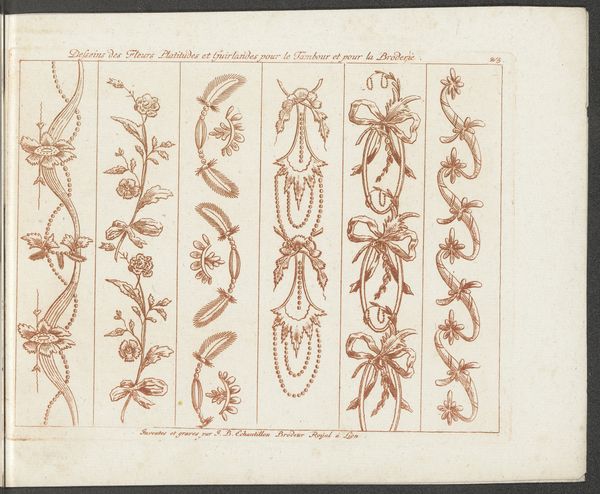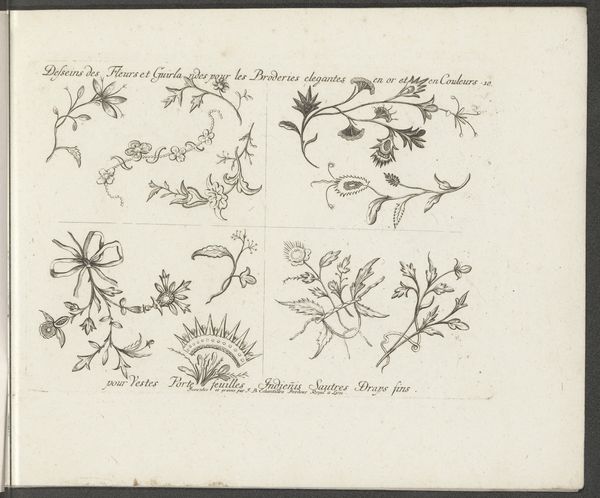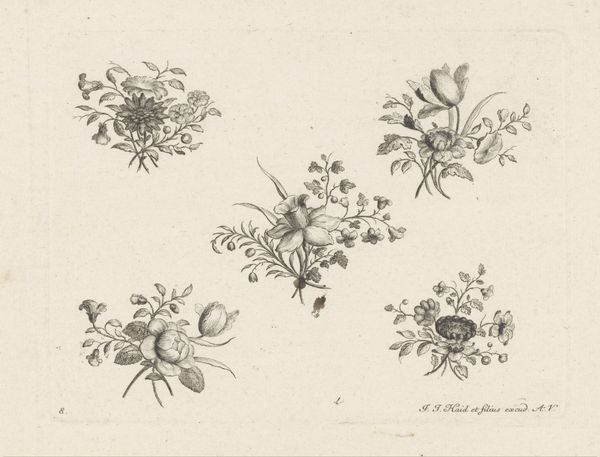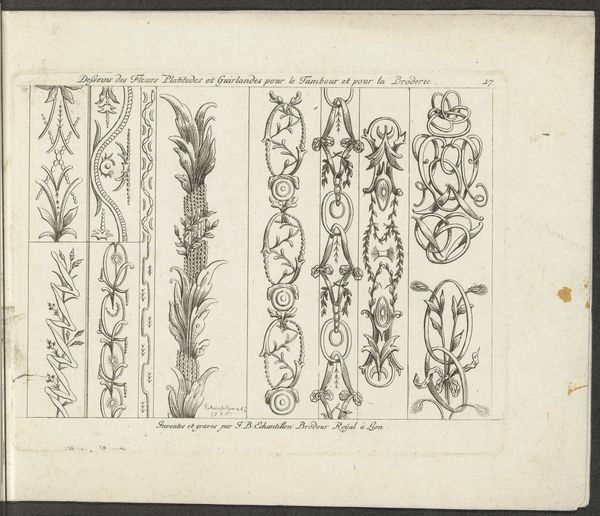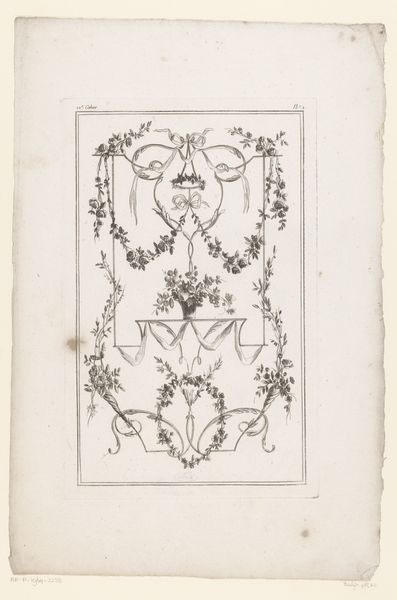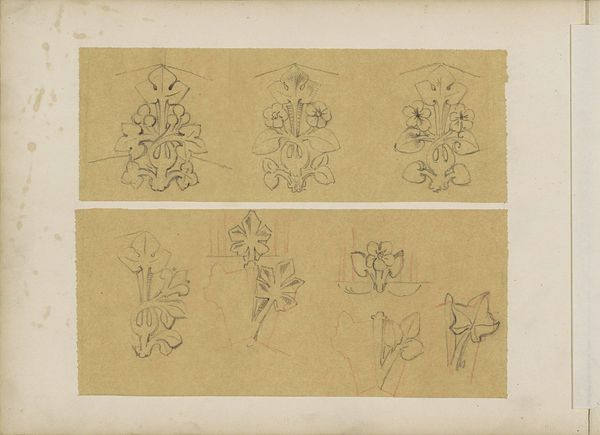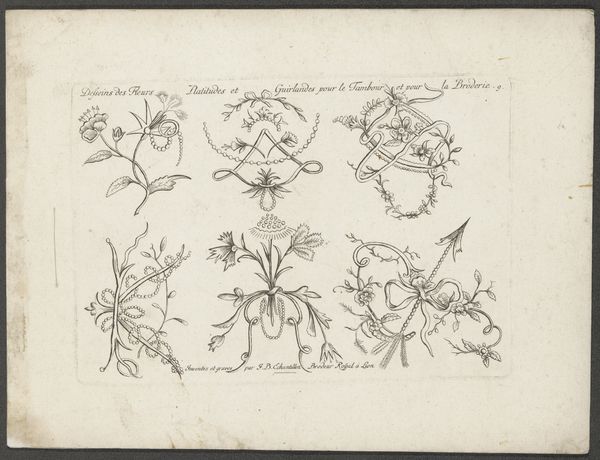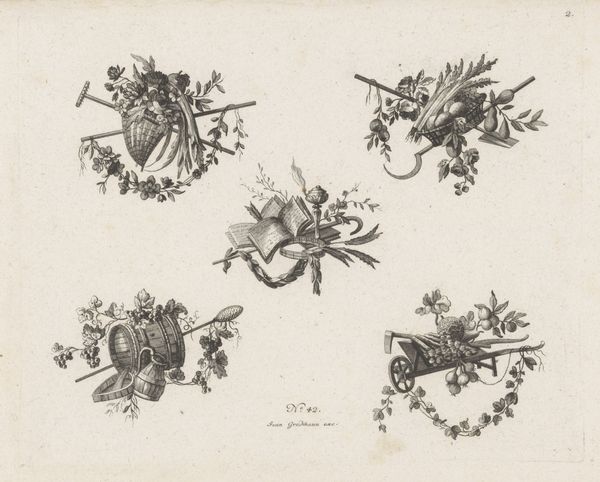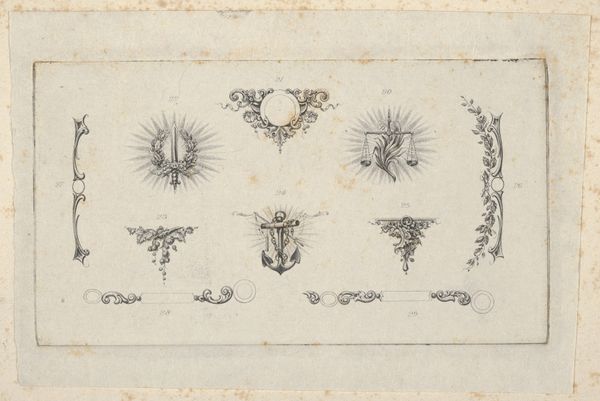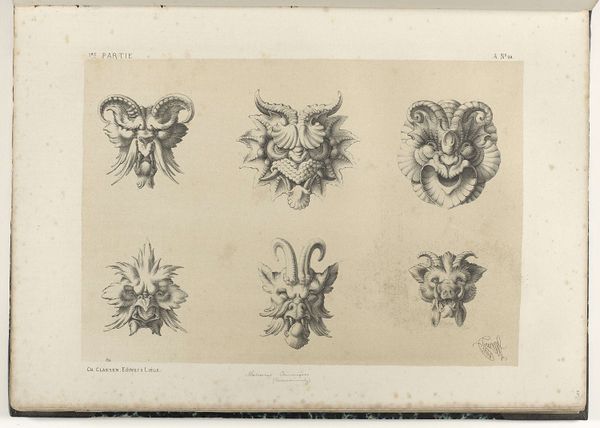
Dimensions: height 178 mm, width 227 mm
Copyright: Rijks Museum: Open Domain
These Six Motifs were designed by Jean Baptiste Echantillon, a royal embroiderer based in Lyon. Lyon was then the silk capital of Europe. The print would have been etched on a copper plate using acid, before being printed on paper. The designs are intended for tambour and embroidery, forms of needlework that were highly prized in the 18th century. We can see delicate floral patterns, ribbons, and garlands, all rendered in a fine, precise manner. The designs show that craft practices were not isolated. Printmaking enabled the dissemination of designs to a wider audience, contributing to the growth of the fashion and textile industries. This print offers a glimpse into the world of luxury goods and skilled labor of the past. By considering the materials and processes involved in its creation, we can appreciate the rich social and cultural significance embedded within this seemingly simple design. It reminds us that even the most decorative of objects have a history rooted in labor, politics, and consumption.
Comments
No comments
Be the first to comment and join the conversation on the ultimate creative platform.
